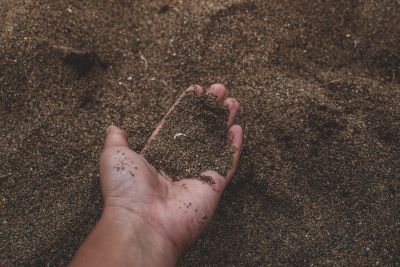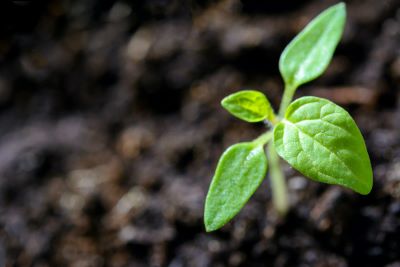Finding & Choosing Fertilizer Based On Your Specific Soil Type
When it comes to gardening and cultivating plants, choosing the right fertilizer for your soil type is paramount. Soil types can vary significantly, and different soils have distinct properties that influence how they interact with fertilizers. Sandy soils, clay soils, and loamy soils all have their unique characteristics, and understanding these differences will enable you to make informed decisions on fertilizer selection.
In this comprehensive guide, we will delve into the intricacies of each soil type and offer valuable insights on how to choose the best fertilizer for specific soil types. Whether you are a seasoned gardener or just starting, this article will equip you with the knowledge and expertise needed to nurture your plants and promote optimal growth.
Sandy Soils – The Light and Draining Type
Sandy soils are characterized by their loose texture and excellent drainage capabilities. They are known for their ability to warm up quickly in the spring, making them ideal for certain plants. However, they tend to lack essential nutrients and have a low capacity for holding water, which can be challenging for plant growth.
1. Understanding Sandy Soils
Before choosing a fertilizer for sandy soils, it is crucial to understand their unique properties. Sandy soils consist of larger particles that create larger spaces between them. This results in faster water drainage, which can lead to nutrients being washed away before plants can absorb them.

2. Best Fertilizer for Sandy Soils
To enrich sandy soils, look for fertilizers with a balanced nutrient profile and a higher concentration of organic matter. Organic fertilizers, such as compost or well-rotted manure, are excellent choices as they improve soil structure and increase nutrient retention. Additionally, look for fertilizers labeled as “slow-release” to provide a steady supply of nutrients over time.
3. Recommended Fertilizer Ratios
For sandy soils, consider using a fertilizer with an N-P-K ratio of 10-20-10 or 5-10-5, which means it contains a higher percentage of phosphorus (P) than nitrogen (N) and potassium (K). Phosphorus promotes strong root development, essential for plants growing in sandy soils.
4. Tips for Application
When applying fertilizer to sandy soils, ensure you water the area thoroughly before and after application to prevent nutrient leaching. Also, avoid excessive fertilization, as sandy soils are more prone to nutrient loss.
Clay Soils – The Nutrient-Rich, Heavy Ground
Clay soils are dense and composed of tiny particles, making them highly retentive of water and nutrients. While their nutrient-rich nature can benefit plants, clay soils also have poor drainage, which can lead to waterlogged roots and hinder plant growth.
1. Understanding Clay Soils
Clay soils are packed with nutrients, but their small particles create a dense structure that impedes water drainage and aeration. Consequently, clay soils tend to become compacted and may take longer to warm up in the spring.
2. Best Fertilizer for Clay Soils
For clay soils, look for fertilizers that improve drainage and aeration while providing essential nutrients. Avoid using fertilizers with a high concentration of salts, as clay soils can be more sensitive to salt buildup.
3. Recommended Fertilizer Ratios
Consider using a fertilizer with an N-P-K ratio of 20-10-10 or 10-10-10 for clay soils. These balanced fertilizers will provide a mix of essential nutrients without overwhelming the soil with excessive salts.
4. Tips for Application
Before applying fertilizer to clay soils, ensure that the soil is slightly moist but not waterlogged. Incorporate the fertilizer into the top layer of soil and water thoroughly after application to aid nutrient absorption.
Loamy Soils – The Ideal Garden Soil
Loamy soils are considered the gold standard of garden soils due to their balanced texture and nutrient-holding capacity. This type of soil contains a mix of sand, silt, and clay, providing an ideal environment for plant growth.

1. Understanding Loamy Soils
Loamy soils are well-draining yet retain enough moisture for plants to thrive. They have excellent nutrient retention properties, making them perfect for cultivating a wide variety of plants.
2. Best Fertilizer for Loamy Soils
For loamy soils, a wide range of fertilizers can be used, including both organic and synthetic options. Choose fertilizers that complement the specific nutrient needs of the plants you are growing.
3. Recommended Fertilizer Ratios
Loamy soils generally benefit from balanced fertilizers with an N-P-K ratio of 10-10-10 or 20-20-20. However, always consider the specific requirements of the plants you are growing for optimal results.
4. Tips for Application
When applying fertilizer to loamy soils, follow the instructions on the product label carefully. Avoid over-fertilization, as excessive nutrients can harm plants and leach into the groundwater.
FAQs
Q: How often should I fertilize my plants in sandy soils?
A: In sandy soils, frequent light fertilization is more effective than infrequent heavy applications. Apply a balanced, slow-release fertilizer every 6-8 weeks during the growing season.
Q: Can I use the same fertilizer for all my plants in clay soils?
A: While you can use the same fertilizer for most plants, it’s essential to consider the specific nutrient needs of individual plants. Adjust the fertilizer type and application rate based on the plants you are cultivating.
Q: Can I mix sand with clay soil to improve drainage?
A: Adding sand to clay soils is generally not recommended, as it can worsen the compaction problem. Instead, incorporate organic matter like compost to enhance drainage and soil structure.
Q: Will fertilizing loamy soil improve its fertility further?
A: Loamy soils are already fertile, but fertilization can enhance their nutrient content and support plant growth. Use balanced fertilizers to maintain the soil’s ideal nutrient levels.
Q: Can I create a loamy soil mix for container gardening?
A: Yes, you can create a loamy soil mix by combining equal parts of sand, silt, and clay with organic matter like compost or peat moss. This mix provides an excellent medium for container gardening.
Q: Is it essential to conduct a soil test before applying fertilizers?
A: Conducting a soil test is highly recommended before fertilizing to determine the soil’s nutrient levels and pH. This helps you select the most suitable fertilizer for your soil type and specific plants.
Q: How do I know what type of soil I have?
A: Determining the soil type in your garden or landscape is essential for successful gardening and plant growth. Luckily, there are several simple methods you can use to identify the type of soil you have. One of the easiest ways to get an initial idea of your soil type is through observation. Look closely at the soil in your garden and take note of its appearance and texture. By knowing your soil type you can gain valuable insights into its characteristics.

Sandy Soil: Sandy soil feels gritty and coarse. It is loose and does not clump together easily.
Clay Soil: Clay soil feels sticky and dense. When wet, it forms hard clumps that are difficult to break apart.
Loamy Soil: Loamy soil has a crumbly texture and is easy to work with. It holds its shape when squeezed but breaks apart easily.
Q: How do I know if a plant will work with my soil type?
A: Determining whether a plant will thrive in your soil type is essential for successful gardening. Different plants have specific soil requirements, and understanding these preferences will help you choose the right plants for your garden. One of the best things you can do is to research the plans soil preferences, drainage needs, and nutrient needs.
In Conclusion
Choosing the right fertilizer for your specific soil type is a fundamental aspect of successful gardening and plant cultivation. Sandy soils, clay soils, and loamy soils each have unique properties that influence their interactions with fertilizers. By understanding the characteristics of each soil type and using the appropriate fertilizers, you can promote healthy plant growth, lush greenery, and an abundance of blooms. Remember to always follow the application guidelines on the fertilizer packaging and avoid over-fertilizing, as it can lead to nutrient imbalances and harm the environment.
In summary, here are some key takeaways for choosing the right fertilizer for specific soil types:
For Sandy Soils:
Use balanced, slow-release fertilizers with higher phosphorus content.
Opt for organic fertilizers to improve soil structure and nutrient retention.
Water thoroughly before and after applying fertilizers to prevent nutrient leaching.
For Clay Soils:
Choose fertilizers that improve drainage and aeration.
Look for balanced fertilizers with moderate salt content.
Apply fertilizers to slightly moist, not waterlogged, soil.
For Loamy Soils:
Utilize a wide range of fertilizers, considering plant-specific nutrient requirements.
Balance the soil’s nutrient content with balanced fertilizers.
Follow the product label instructions for application.
With this knowledge in hand, you can confidently tend to your garden and make informed decisions when it comes to fertilizing your plants. Proper fertilization will not only support plant health and growth but also contribute to the overall sustainability of your gardening practices. And remember that gardening is a journey of discovery, and each soil type may require some experimentation to find the best approach. Embrace the learning process. When you use the right fertilizer you can enjoy the rewards of a thriving, lush garden filled with beautiful plants and vibrant blooms.
